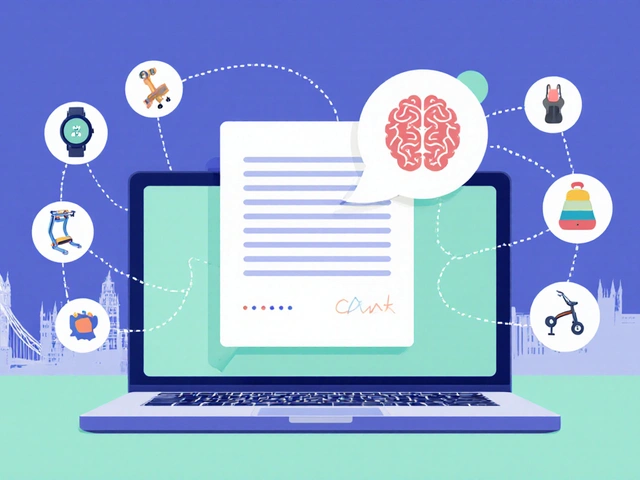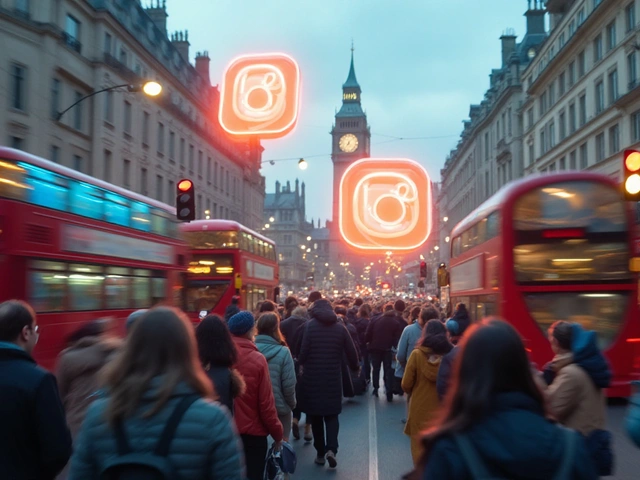If someone told you five years ago that chatting with a robot could boost your brand, skyrocket your conversions, and make your marketing team twice as productive, you’d probably ask them to lay off the sci-fi movies. But here we are. ChatGPT stormed the scene and didn’t bother with baby steps—it’s flipping how we do digital marketing on its head. You’d be amazed that over 80% of marketers now use AI-powered tools like ChatGPT for everything from copywriting to customer service, and that’s just scratching the surface. Digital marketing, once clogged with tedious manual work and endless guesswork, suddenly feels fresher, faster, and way more fun. Let me show you where the magic is happening—and why ignoring ChatGPT is like refusing to use Google in 2004.
Redefining Content Creation: From Blog Posts to Video Scripts
Back in the day, getting a killer blog or irresistible product description meant either spending a ton of cash on freelancers or carving out your weekend. ChatGPT bulldozed those barriers. Now, marketers can whip up entire blogs, catchy emails, social media posts, and even video scripts in a fraction of the time—and sometimes with just a few smart prompts. Here’s the wild part: according to a HubSpot report from April 2025, brands using AI-driven copywriting tools saw their content creation cycle shrink by an average of 45%, while engagement with audiences actually ticked up.
Let’s talk quality. One common worry was that AI would spit out bland, robotic text. But ChatGPT’s ability to tailor tone, adapt to industry lingo, or even mimic your brand’s voice has made it harder for readers to spot the difference. I’ve seen brands use ChatGPT to write clever TikTok scripts, detailed how-to guides, and charming newsletters—all without sounding like a bot.
Here’s a tip that pro marketers swear by: always fine-tune the AI’s outputs. Feed ChatGPT your best-performing blogs or videos and ask it to ‘learn’ that style. The more details you give—target audience, content length, tone, slang—the better your results get. You can even ask ChatGPT to rewrite content in the style of viral posts or your top competitors, which makes research and inspiration a breeze. It’s not about letting AI do all the writing, but letting it do the heavy lifting so your team can polish, perfect, and publish much faster.
Don’t forget multilingual content. ChatGPT supports tons of languages, meaning you can localize your copy for new markets almost instantly. Big brands are already using this to test international waters without hiring native writers right away. Imagine being able to spin up Spanish, French, or Mandarin blog posts as fast as you write in English—the global reach is incredible.
There’s a real trick here if you want authentic results: keep feeding ChatGPT recent data about industry shifts, customer pain points, and pop culture trends. The more current and lively your prompts are, the fresher and more on-the-pulse your content will sound. No more out-of-date stats or yesterday’s jokes—just high-impact writing ready for 2025’s digital landscape.
The Science of Personalization: How ChatGPT Gets Personal
Ever wondered why some emails just “get you,” or why that ad for the shoes you ogled last week follows you like a puppy? ChatGPT has cranked up personalization to blazing-hot levels. We’re not just talking "Dear [First Name]". By tapping into CRM data, purchase history, and online behavior, brands now use AI to craft hyper-personal messages, offers, and even full web experiences that feel handpicked for the customer.
Take e-commerce for instance. Picture a chatbot powered by ChatGPT responding to a late-night shopper: It remembers they left headphones in their cart last month, asks if they're ready for that playlist upgrade, and nudges them with a time-sensitive discount code. This isn’t just clever programming; it’s AI-fueled empathy, and it doubles conversion rates in many cases. Studies from Salesforce found that brands using ChatGPT-driven personalization witnessed up to 70% higher click-through rates on targeted campaigns.
B2B brands are getting in on the fun too. AI tools can scan LinkedIn, news headlines, and industry shuffles, then generate ultra-customized outreach messages. Instead of “Can we book a call?” you get, “Saw your latest feature on SaaS Talk—congrats! Here’s how our platform complements your new product launch.” The personal touch stops you dead in your tracks, and that’s pure digital marketing gold.
If you’re crafting personalized journeys, there’s a golden rule you can borrow: Train your AI tools using real customer feedback. The best digital marketers feed ChatGPT ongoing ratings, reviews, and support tickets, so the next response is always better. Want to spark loyalty? Use ChatGPT to generate “happy birthday” surprises, renewal reminders, or thank-yous after a sale—all tailored to personal quirks and preferences stored in your database.
Privacy is the flip side of the coin. With all this personalization, smart brands are transparent about the data they use. Include opt-in choices and clear communication on how you’re leveraging AI for a better experience. Nobody likes to feel watched, but everyone loves feeling understood.

Smarter Customer Engagement: 24/7 AI That Learns on the Fly
If you’ve ever chatted with a brand at 2AM and been surprised at how fast and friendly the reply was, odds are good AI was behind it. ChatGPT-powered assistants are always on, answering FAQs, handling complaints, and checking orders without any signs of fatigue. Harvard Business Review noted this spring that chatbot response times are now, on average, six times faster than human teams on live chat. All those midnight impulses and urgent questions? Instant answers boost satisfaction and keep customers from bouncing.
The best part: These aren’t just one-trick bots. ChatGPT gets “smarter” with each interaction. Feed in repeated queries, emerging trends, or common complaints, and your bot’s answers evolve. That’s how some brands have transformed basic support into a full-blown loyalty machine—solving problems while weaving in upsell suggestions or personalized recommendations. For example, a skin-care brand’s AI assistant not only solves order snags but also recommends next-buy serums based on the customer’s previous chats and skin concerns.
Let’s not pretend AI is perfect, though. People still crave a human touch for tricky questions or emotional issues. That’s why savvy marketers mix AI with “human-on-demand” options—let the bot handle the grunt work, then pass customers to a real person for sensitive cases. This tag-team approach keeps things scalable without losing the warmth we all want in customer service.
If you’re just rolling out ChatGPT for engagement, start with the basics: FAQs, order tracking, appointment booking, and simple troubleshooting. Then let your bot learn—collect feedback, tweak answers, and track how happy customers are. There’s real gold in those metrics. One surprising fact from Drift’s 2024 AI chat study: companies that combine AI guidance with human support reported 40% higher customer retention rates. Not bad for a little investment in smart engagement.
Here’s a quick win: Give your AI a personality that fits your brand. Whether it's peppy, wisecracking, or super-polite, let your bot reflect your vibe—customers notice, and it makes every conversation more memorable. A little personality goes a long way in building connections, even if there isn’t a real person behind the screen.
Marketing Automation and Data-Driven Insights: The New Marketing Engine
When AI takes over the grunt work, marketers can finally breathe. From segmenting customers to scheduling posts and running A/B tests, ChatGPT and similar platforms have taken automation from clunky to seamless. One SaaS platform saw campaign launch times drop by half after switching to ChatGPT-driven workflow automation. Every boring, repetitive task? Now offloaded within seconds, which means more creative energy focused on strategy and bold ideas.
The real magic happens with data. ChatGPT doesn’t just automate; it analyzes oceans of customer info—purchase histories, clickstreams, loyalty patterns—and spits out clear, actionable tips. Marketers are using this to spot trends nobody saw coming and to predict what products might blow up next quarter. Picture your inbox filling each morning with ready-to-use campaign tactics based on what’s working on TikTok, Reddit, and niche forums. It’s like having a tireless research assistant that never asks for coffee breaks.
Want to see higher ROI? Set ChatGPT to monitor your open rates, conversions, and social buzz. Marketers in 2025 use these real-time dashboards to tweak ads, emails, and even landing page copy daily. There’s less guessing and way more winning.
For those worried about losing the human touch in automation—don’t sweat it. The best results come from blending the AI’s speed and precision with your own creativity. Use ChatGPT to draft campaign themes, brainstorm hooks, or even schedule posts based on when your audience is most likely to engage. Then review, refine, and add your secret sauce before pushing anything live.
If your team is overwhelmed by data, start small. Use ChatGPT to generate weekly summaries of what’s working and what’s not. As you trust the system, hand off more tasks—just don’t forget to audit everything regularly. AI won’t replace sharp strategy, but it will definitely help you do more of what works (and less of what doesn’t).

Challenges, Pitfalls, and Tips to Stay Ahead with ChatGPT in Digital Marketing
Of course, every shiny new tool comes with a few fingerprints and smudges. Using ChatGPT in digital marketing isn’t all trophies and victory laps. There’s the elephant in the room: accuracy. If you’re not careful, AI might hallucinate facts, misinterpret sarcasm, or get weirdly formal in its tone. That’s why seasoned marketers always fact-check AI outputs and never set campaigns on autopilot without a human review. One slip, and you could be promoting last year’s event or misquoting data—a quick way to erode trust.
Originality is another hurdle. You want content that stands out, not a sea of sameness. Avoid copy-paste jobs. Use ChatGPT’s outputs as a foundation, then inject your voice, add recent stats, or sneak in a left-field story your competitors haven’t thought of. This lets you get the best of both worlds: AI speed and human sparkle.
There’s also the question of ethics and bias. ChatGPT learns from mountains of online data—and not all of it is polite or fair. Stay vigilant for subtle bias in language, representation, or product recommendations. Most brands now run periodic audits of their AI-generated content to ensure fairness and inclusivity. It’s not just about staying out of trouble; it’s about connecting with the widest possible audience and building real trust.
Data privacy remains front and center. Every smart marketer knows to use only the info customers have consented to share. If you’re using AI to personalize, light up those privacy policies and give customers clear control over what’s tracked and shared. It’s better to have fewer, happier users than risk a backlash that tanks your reputation.
Want to keep your edge? Always test, tweak, and invest in training your team. Run monthly “AI tune-ups.” Tweak prompts, monitor what’s working, and host workshops so everyone is up to speed on new features. The companies who made the biggest gains in 2025 all spent real time upskilling—because when humans partner with AI, good things happen.
Finally, keep an eye on emerging trends. In the coming year, expect ChatGPT integrations in tools you already use: email platforms, analytics dashboards, and video editing suites. Those who move quickly will be the brands people remember. So don’t sit back. Experiment, mix and match tools, and ask this one question often: “How can AI solve my real business headaches today?” Odds are, ChatGPT already has an answer.
That’s the new wave of digital marketing. Not just faster or cheaper—but smarter, friendlier, and infinitely more personal. The rise of ChatGPT isn’t just a tech upgrade—it’s a total game-changer. If you’re not riding this wave, you’re already paddling behind.





